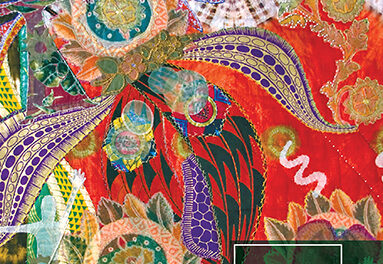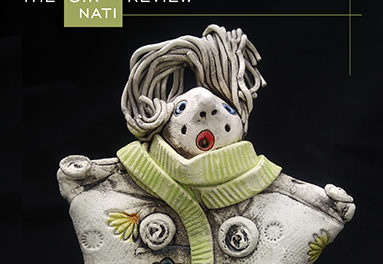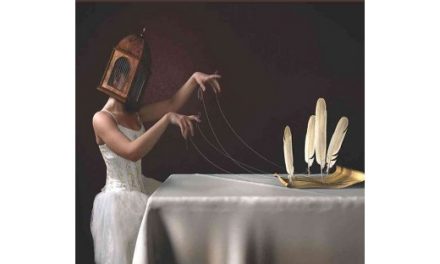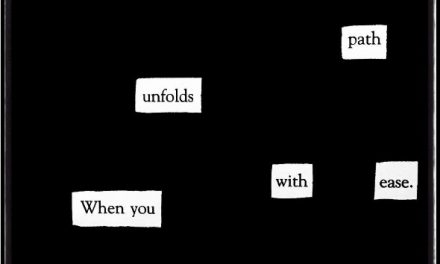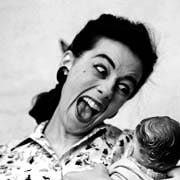 We’re back with an early Mother’s Day installment of Pas de Deux in which Shara Lessley interviews fellow poet and mother Kathryn Nuernberger about her poem “Toad” from issue 10.1. Read on to discover how Lessley and Nuernberger confront some of the painful/joyful moral ambiguities of motherhood in the twenty-first century, and to finally figure out how Toad, beloved cartoon character from the Frog and Toad easy-reader series, cures his amphibian melancholia.
We’re back with an early Mother’s Day installment of Pas de Deux in which Shara Lessley interviews fellow poet and mother Kathryn Nuernberger about her poem “Toad” from issue 10.1. Read on to discover how Lessley and Nuernberger confront some of the painful/joyful moral ambiguities of motherhood in the twenty-first century, and to finally figure out how Toad, beloved cartoon character from the Frog and Toad easy-reader series, cures his amphibian melancholia.
Shara Lessley: Poems about parenthood frequently figure the child as static or godlike, enigmatic or revered. What I love about “Toad” is its refusal to idealize mother or daughter. What roles do kids (or mothers) typically play in poetry, and how does “Toad” defy such conventions?
Kathryn Nuernberger: There’s a disconnect between our idealized expectations of mothers and the lived experience, which, if you’ve internalized the impossible standards of the romantic ideal, can only result in falling short. Motherhood is composed of many spots of time, while lyric poetry has tended to the put the spotlight on just one kind of moment. Robert Hass has this really insightful, humane line in “Dragonflies Mating.” He writes:
When we say “mother” in poems,
we usually mean some woman in her late twenties
or early thirties trying to raise a child.We use this particular noun
to secure the pathos of the child’s point of view
and to hold her responsible.
Hass points out we use the word mother as a stand-in for “every need fulfilled,” and that’s not a sustainable endeavor for an actual mother. How many years can a real parent go before the child cries for reasons no mother or father can solve?
I could give you a seven-page treatise on the theme of parenthood in contemporary poetry, but nobody wants to read all that on a blog. So my final words on the subject will have to be: Brigit Pegeen Kelly, K. A. Hays, Douglas Kearney, Matthea Harvey, Rachel Zucker, Jennifer Kronovet, Larissa Szporluck, Corey Marks, et alia.
SL: “Toad” perfectly enacts the daily chaos of parenthood—that contradictory rush of surprise that interrupts routine, our sad (perhaps I should speak only of myself!) efforts to manage, maintain, monitor, make fun! The poem’s sentences are both energizing and exhausting. Can you talk a little about how syntax builds momentum and what it suggests about the speaker’s emotional state?
KN: Toddler frenzy + sleep deprivation = addled. Addled = long sentences + overreliance on conjunctions.
SL: At the beginning of “Toad,” a mother admits to pushing her child to the floor and then spins fifteen or so lines narrating the scene before arriving at the turn: “And I know this should be the poem about how I’m horrified/ at myself,” the speaker confesses, “the poem about what in ourselves we have to live with . . .” I wonder here about the speaker’s expectations—of herself, of motherhood, of poetry’s ability to capture the complex dynamics and unstated tensions that accompany parenthood. When you were drafting “Toad,” did the “but” that follows the aforementioned lines surprise you? Did it feel risky to write? To justify why the speaker pushed her “two-year-old/ against a wall”?
KN: One thing I like about poetry is that when you say something is “not” something it instantly becomes that something, while remaining not it at all. To say “this is not” is to invite the reader to consider what it would be if it were. And so it is a poem about what in ourselves we have to live with.
SL: The poem finally flashes forward to a playful (more idealized) day that involves hide-and-seek, hunting for bugs, and reading Frog and Toad. How does the children’s book connect with the title? Why is reading so significant to “Toad”?
KN: Toad suffers some pretty crushing melancholy in that book. He won’t get out of bed, and Frog tricks him into coming into the sunshine to play; he lives in squalor because he can’t find the will power to wash his clothes or clean the kitchen. We all know part of becoming an adult is realizing your parents are people, and I think the image of the daughter reading this particular book alone points in that direction.


